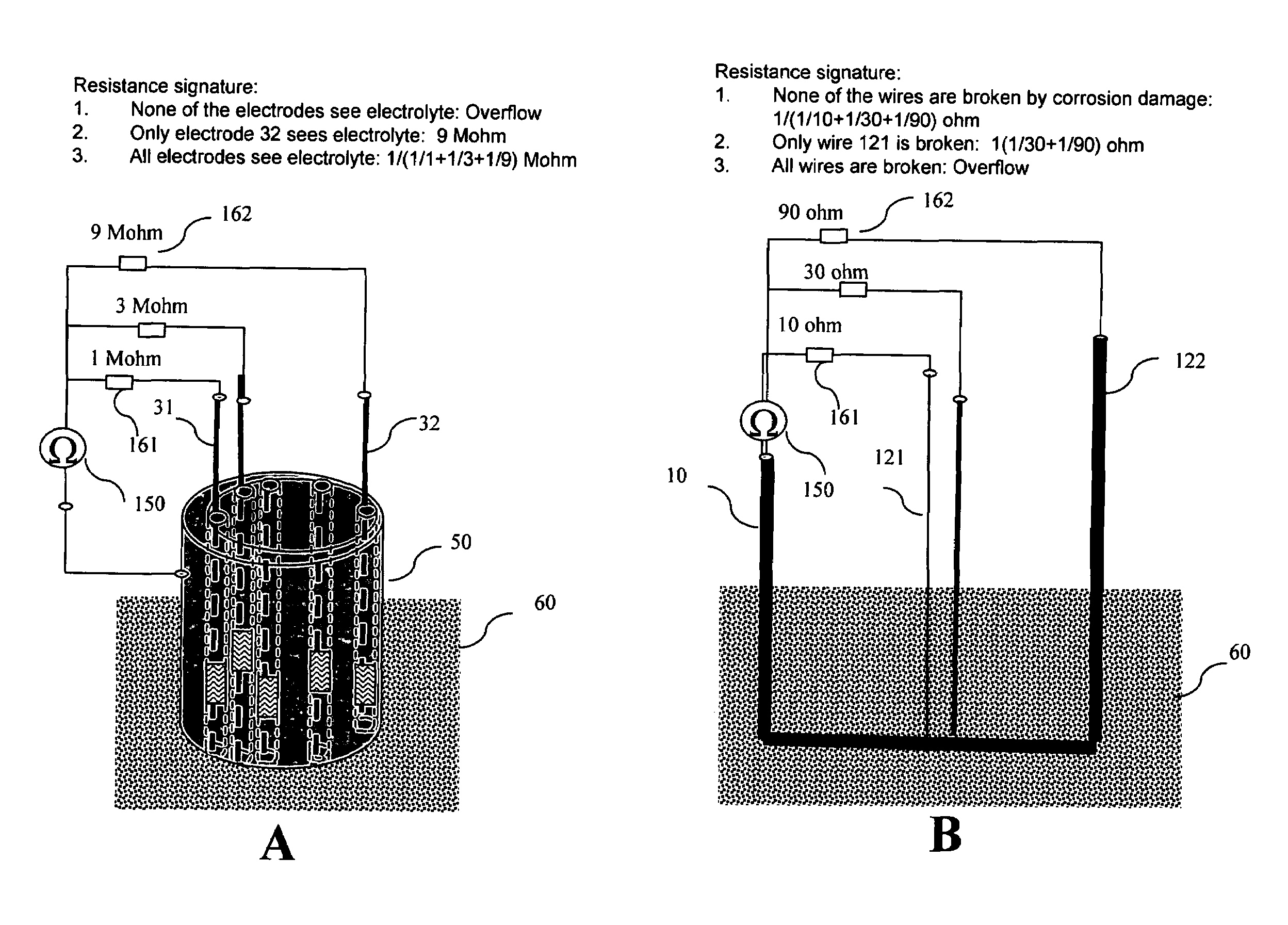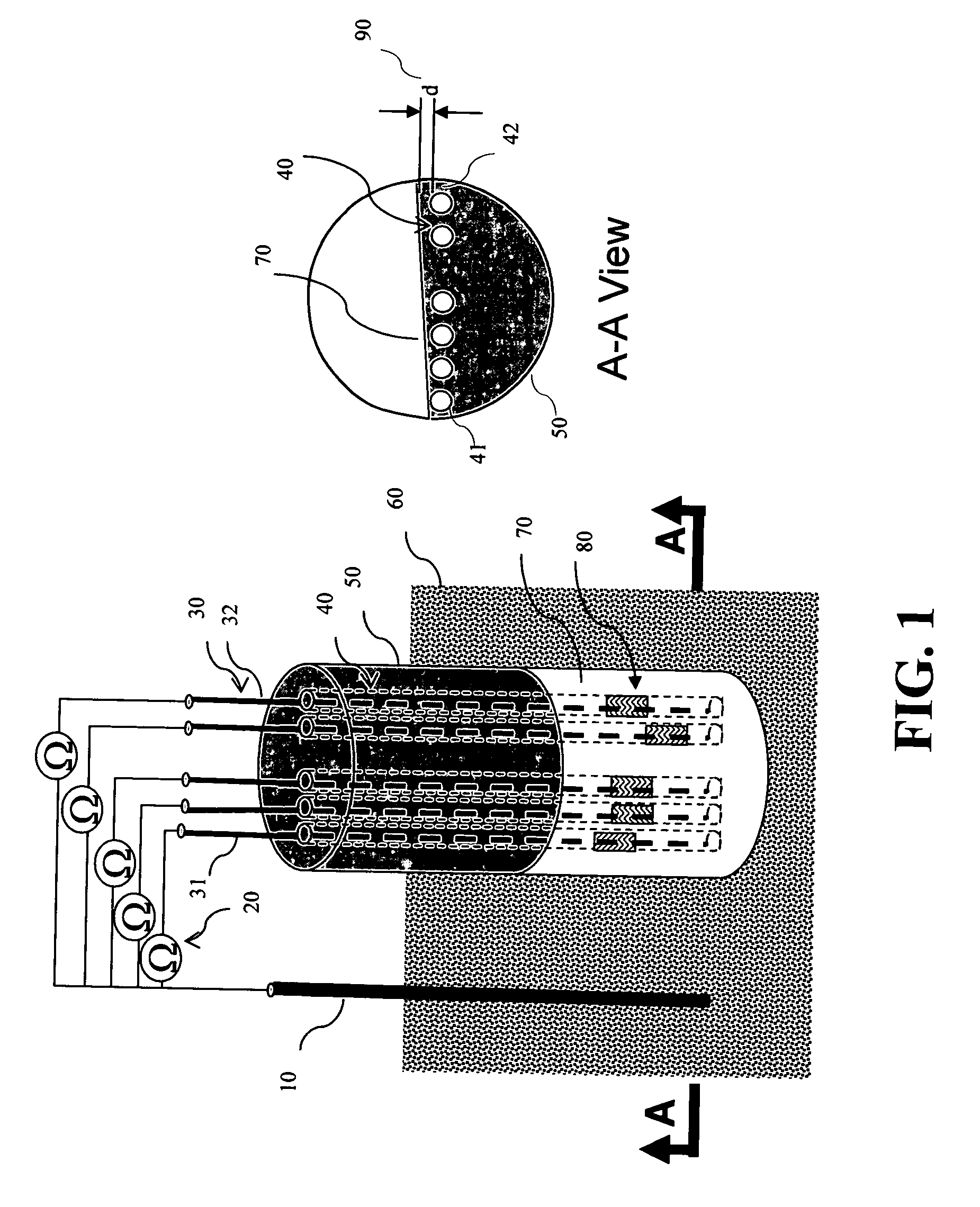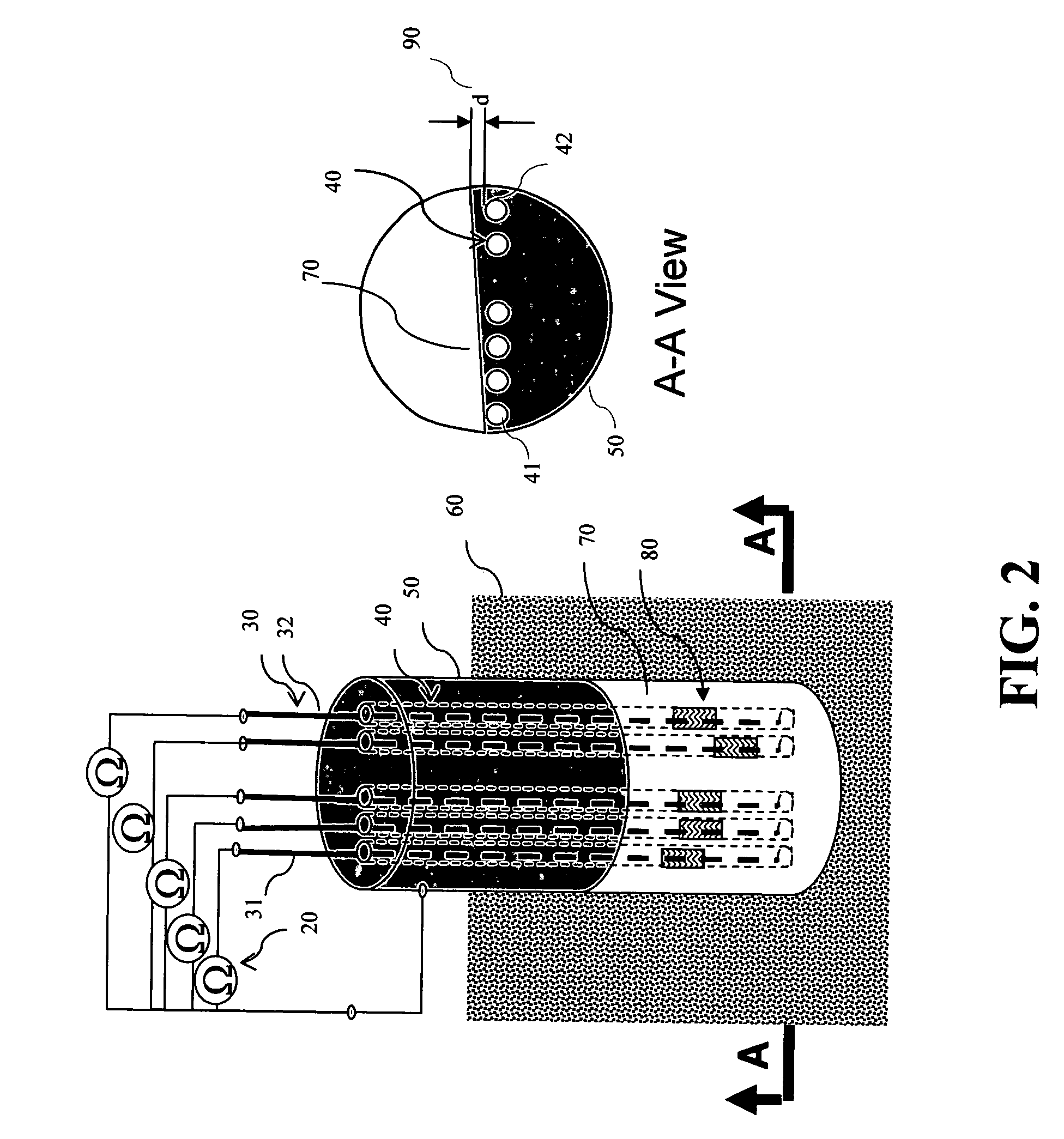Multihole and multiwire sensors for localized and general corrosion monitoring
a multi-wire and sensor technology, applied in the direction of resistance/reactance/impedence, instruments, measurement devices, etc., can solve the problem of not being able to be used as real-time sensors to track the changes
- Summary
- Abstract
- Description
- Claims
- Application Information
AI Technical Summary
Problems solved by technology
Method used
Image
Examples
Embodiment Construction
FIGS. 1 and 2
[0022]FIG. 1 shows a schematic diagram of a device for measuring corrosion penetrations of a metal of interest 50 in an electrolyte (corrosive medium) 60. The metal of interest 50 has a cylindrical form and multiple holes 40 drilled from the top of the metal in parallel to the axial direction of the cylindrical metal (not drilled through). A surface 70 is machined, with a precision machining means, in parallel to multiple holes 40 such that the distance (d) from the first hole 41 is close (e.g., several micrometers) to the surface and the distance from the last hole 42 is far (e.g., up to several millimeters) from the surface 70. One of the multiple electrodes 30 is placed inside each of the holes. The electrodes may be sealed to the holes at the top of the metal of interest 50. Each electrode is connected, through an individual ohmmeter or one channel of a multichannel ohmmeter 20, to a common electrode 10 placed in the same corrosive medium 60. Insulating spacers 80 a...
PUM
| Property | Measurement | Unit |
|---|---|---|
| corrosion penetration rate | aaaaa | aaaaa |
| thickness | aaaaa | aaaaa |
| thicknesses | aaaaa | aaaaa |
Abstract
Description
Claims
Application Information
 Login to View More
Login to View More - R&D
- Intellectual Property
- Life Sciences
- Materials
- Tech Scout
- Unparalleled Data Quality
- Higher Quality Content
- 60% Fewer Hallucinations
Browse by: Latest US Patents, China's latest patents, Technical Efficacy Thesaurus, Application Domain, Technology Topic, Popular Technical Reports.
© 2025 PatSnap. All rights reserved.Legal|Privacy policy|Modern Slavery Act Transparency Statement|Sitemap|About US| Contact US: help@patsnap.com



